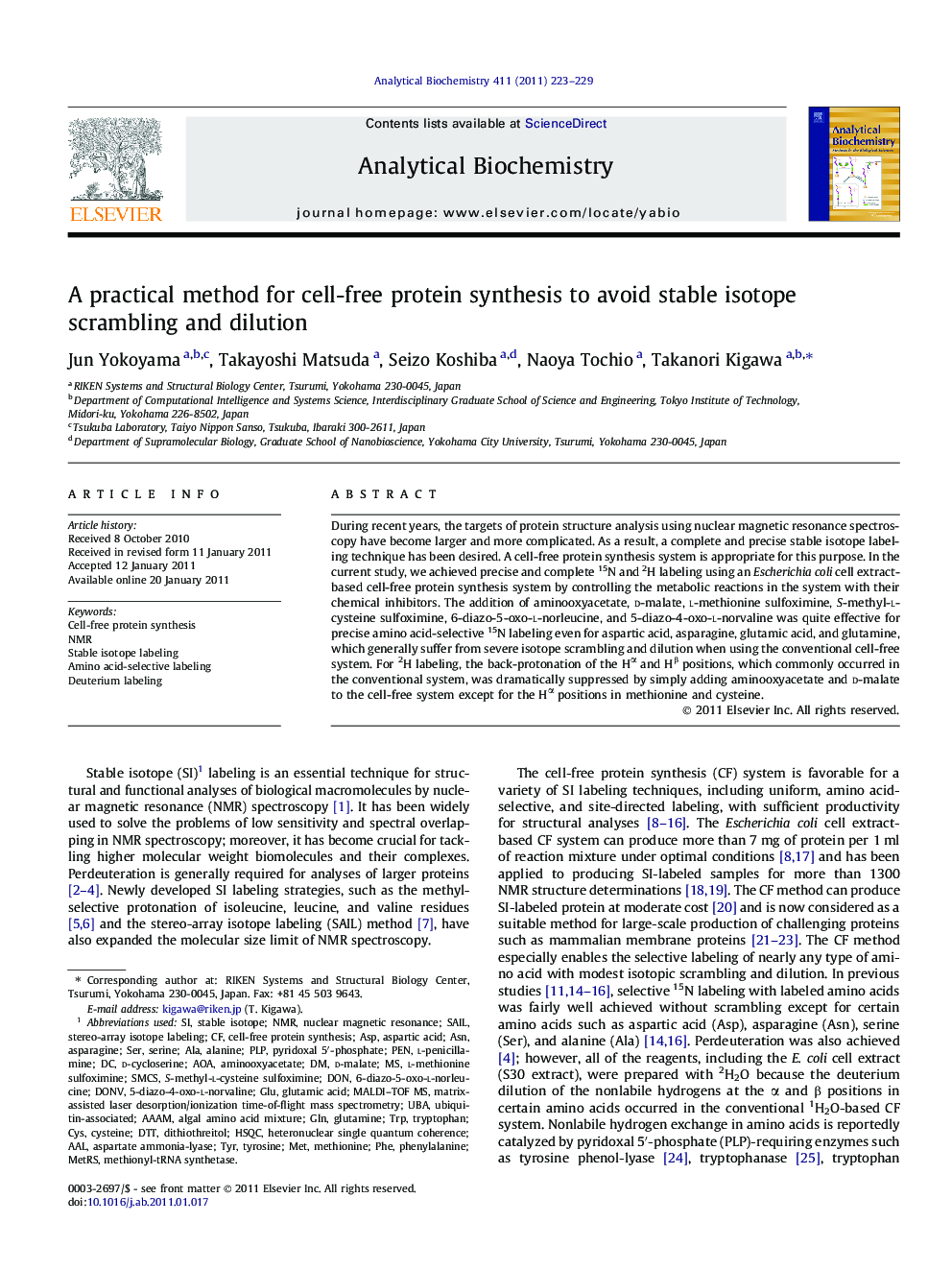| Article ID | Journal | Published Year | Pages | File Type |
|---|---|---|---|---|
| 10532673 | Analytical Biochemistry | 2011 | 7 Pages |
Abstract
During recent years, the targets of protein structure analysis using nuclear magnetic resonance spectroscopy have become larger and more complicated. As a result, a complete and precise stable isotope labeling technique has been desired. A cell-free protein synthesis system is appropriate for this purpose. In the current study, we achieved precise and complete 15N and 2H labeling using an Escherichia coli cell extract-based cell-free protein synthesis system by controlling the metabolic reactions in the system with their chemical inhibitors. The addition of aminooxyacetate, d-malate, l-methionine sulfoximine, S-methyl-l-cysteine sulfoximine, 6-diazo-5-oxo-l-norleucine, and 5-diazo-4-oxo-l-norvaline was quite effective for precise amino acid-selective 15N labeling even for aspartic acid, asparagine, glutamic acid, and glutamine, which generally suffer from severe isotope scrambling and dilution when using the conventional cell-free system. For 2H labeling, the back-protonation of the Hα and Hβ positions, which commonly occurred in the conventional system, was dramatically suppressed by simply adding aminooxyacetate and d-malate to the cell-free system except for the Hα positions in methionine and cysteine.
Related Topics
Physical Sciences and Engineering
Chemistry
Analytical Chemistry
Authors
Jun Yokoyama, Takayoshi Matsuda, Seizo Koshiba, Naoya Tochio, Takanori Kigawa,
